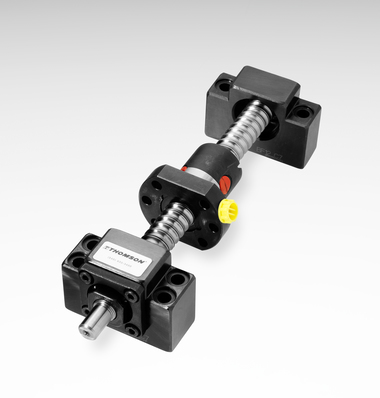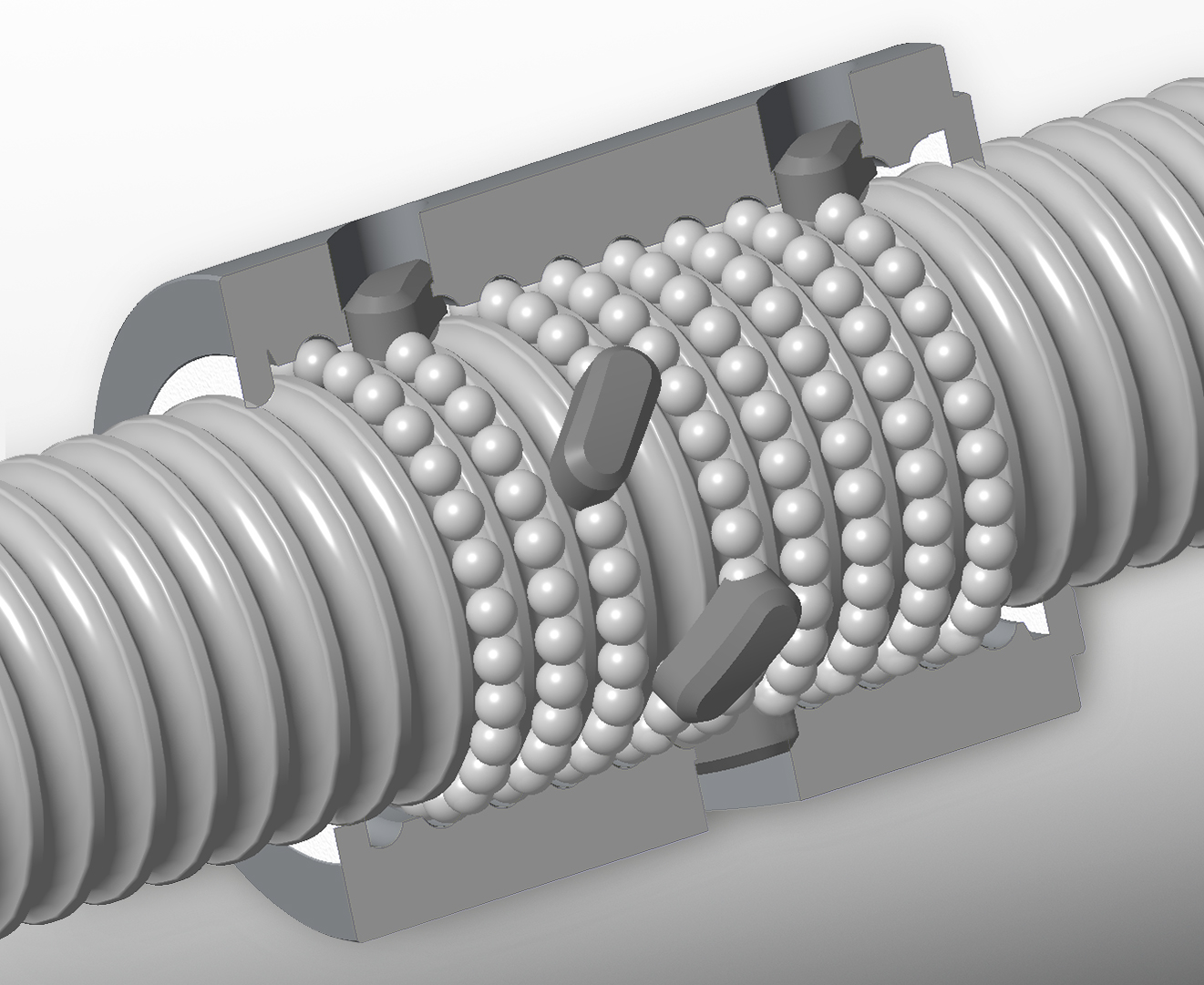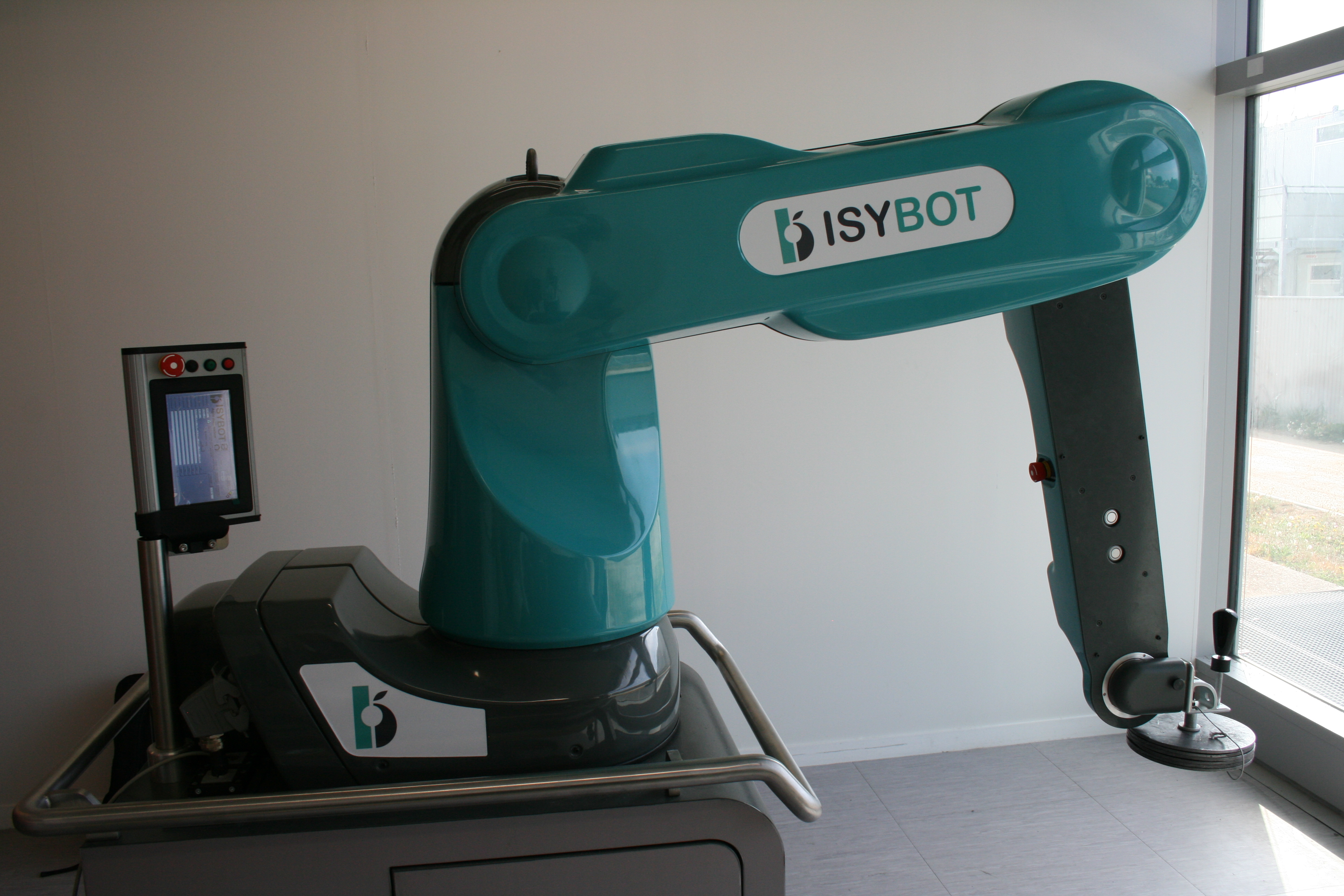Choose Your Login Account
Thomson currently has two account systems - one for the website and CAD model downloads, and one for e-commerce. We understand that two logins is an inconvenience and are working to consolidate our systems into one login process. Until we’re able to consolidate the two logins, please follow these guidelines:
- Download CAD models
- Save and retrieve projects in LinearMotioneering® and MicronMotioneering® tools
- Access Distributor Extranet and all related resources
- Order directly from Thomson online (North America only)
- Authorized Thomson Distributors can view and order from quotes online (Global)
- View the shopping cart and look up prior direct orders
Visão geral
Why Choose Ball Screw Assemblies?
Ball screw assemblies provide an excellent method for translating rotational motion to linear motion for many applications, including those where high loads and close tolerances are required. To apply the correct type of ball screw and nut assembly in a particular application, the design engineer must consider the advantages and capabilities of each. Selecting the right technology can reduce design complexity, improve performance and reduce the overall cost of the assembly.
This image compares the three types of ball return systems (from left to right): internal, button and external.

Mounting Options
Ball screws are mounted in either supported or fixed configurations. A supported end holds the ball screw at one focal point and does not resist bending moments. A supported end is generally easier to align and install than a fixed one, so installation costs are typically lower. A fixed end resists bending moment loads because it is typically based on two bearings spaced sufficiently so the ball screw remains perpendicular to the planes of the rotary bearings. The fixed offers greater column strength and higher critical speed. The image below illustrates four fixity options.
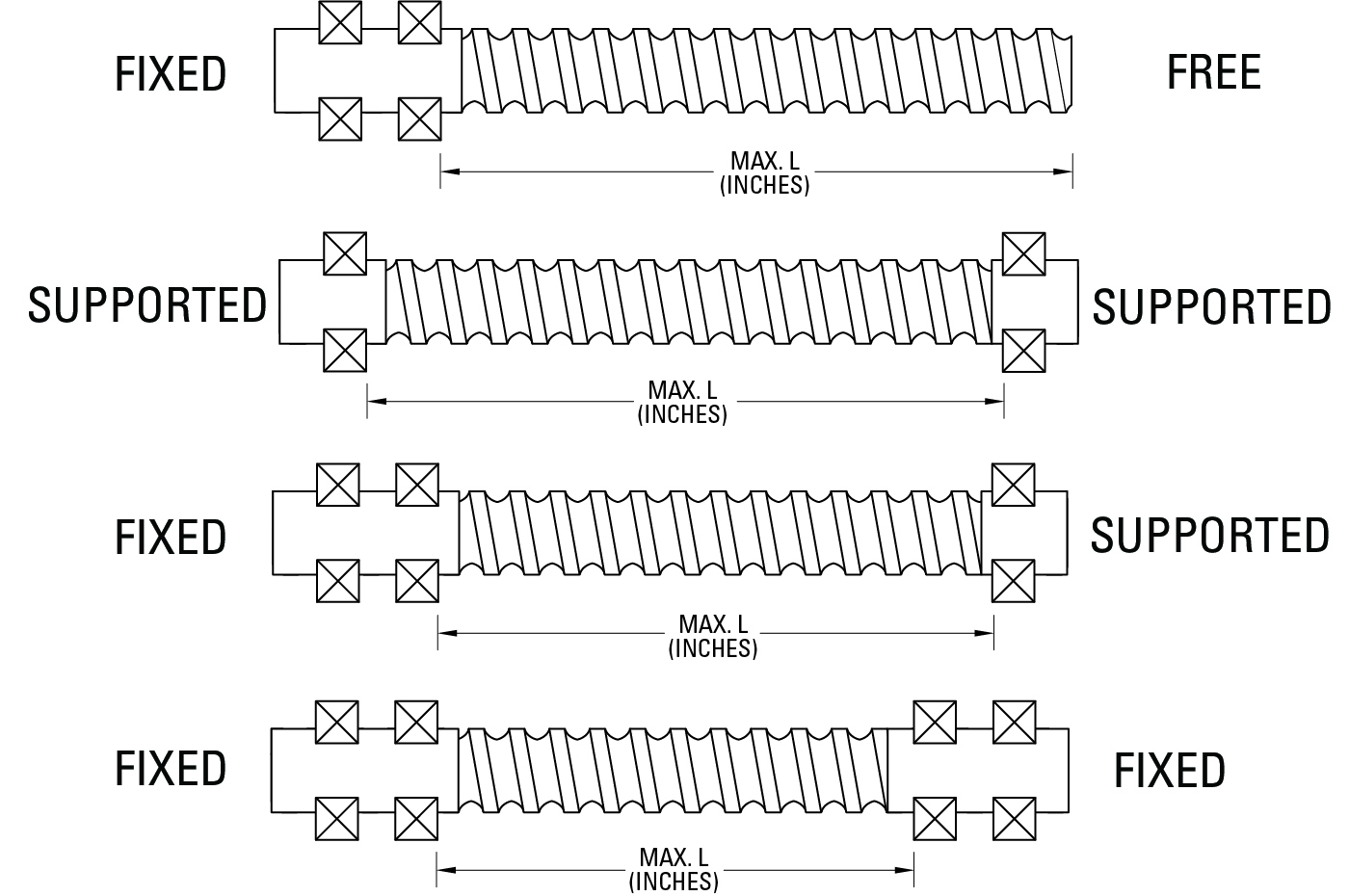
The assembly can be fixed at both ends, fixed at only one end and supported on the other, supported at both ends, or fixed at one end and free at the other.
Ball screw assemblies are not all alike. Whether it be metric ball screws, inch ball screws or miniature ball screws, key differences affect their performance and extend their lives. These include:
- Design. Through extensive research and evaluations, Thomson engineers have been able to develop a comprehensive ball screw offering that delivers optimal solutions for countless applications. Available in a full range of diameters, leads and ball nut configurations, in either pre-loaded or non-pre-loaded types, and all in industry standard envelopes, our ball screws provide dependable accuracy and repeatability at an economical price.
- Quality. With a vast background in countless applications, Thomson is uniquely positioned to provide the highest levels of quality across our full line of ball screw assemblies. Our fully equipped engineering laboratory performs qualification testing for mechanical performance, environmental effects and structural integrity. Your rotating ball screw nut assembly is inspected every step of the way to ensure top quality and performance.
- Materials. The materials used to manufacture ball screw assemblies are critical to their performance. Our in-house metallurgists control and verify that the materials used are of the highest quality. They can also select and recommend materials best suited to your particular application.
- Manufacturing. Thomson maintains the most modern and complete ball screw manufacturing facilities in the industry. In-house manufacturing capabilities include our proprietary heat treating and plating processes. Expert manufacturing using the most modern equipment available provides ball screw assemblies that set the standards for performance, precision and travel life.
- Application Support. Working with Thomson is like having your own staff of ball screw design engineers able to address application concerns and recommend solutions. Thomson field sales and applications engineering personnel have more ball screw expertise than any other group in the industry. They are skilled at evaluating your requirements and designing assemblies that fit your needs.
O que os parafusos esféricos da Thomson podem fazer por você?
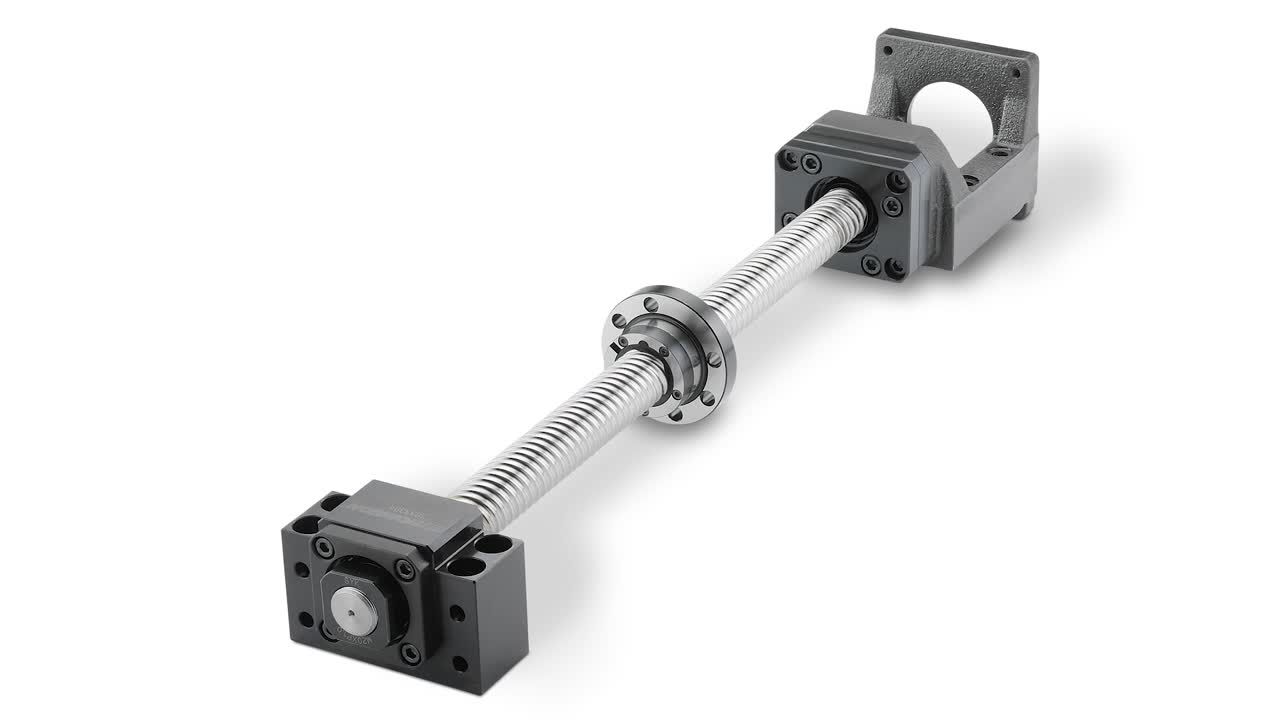
VÍDEO: Atuadores inteligentes da Thomson: projetando máquinas inteligentes com ferramentas inteligentes
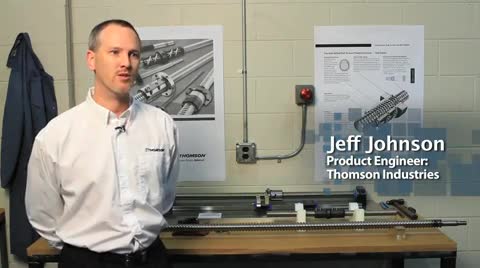
VÍDEO: Maximize a capacidade de carga, o ciclo de vida e a compacidade dos seus projetos de movimento linear
Qualquer aplicação nova requer uma análise cuidadosa do desempenho, da vida e do custo do produto. Especialmente aqueles que lidam com cargas maiores. Descubra por que você deveria estar pensando em um parafuso de esfera de alta carga em vez de parafusos de esfera padrão para a sua próxima aplicação de movimento linear.
Apresentador: Markus Brändle, especialista em linha de produção – Screws, Screw Jacks e LB&G Thomson Neff Industries, Alemanha
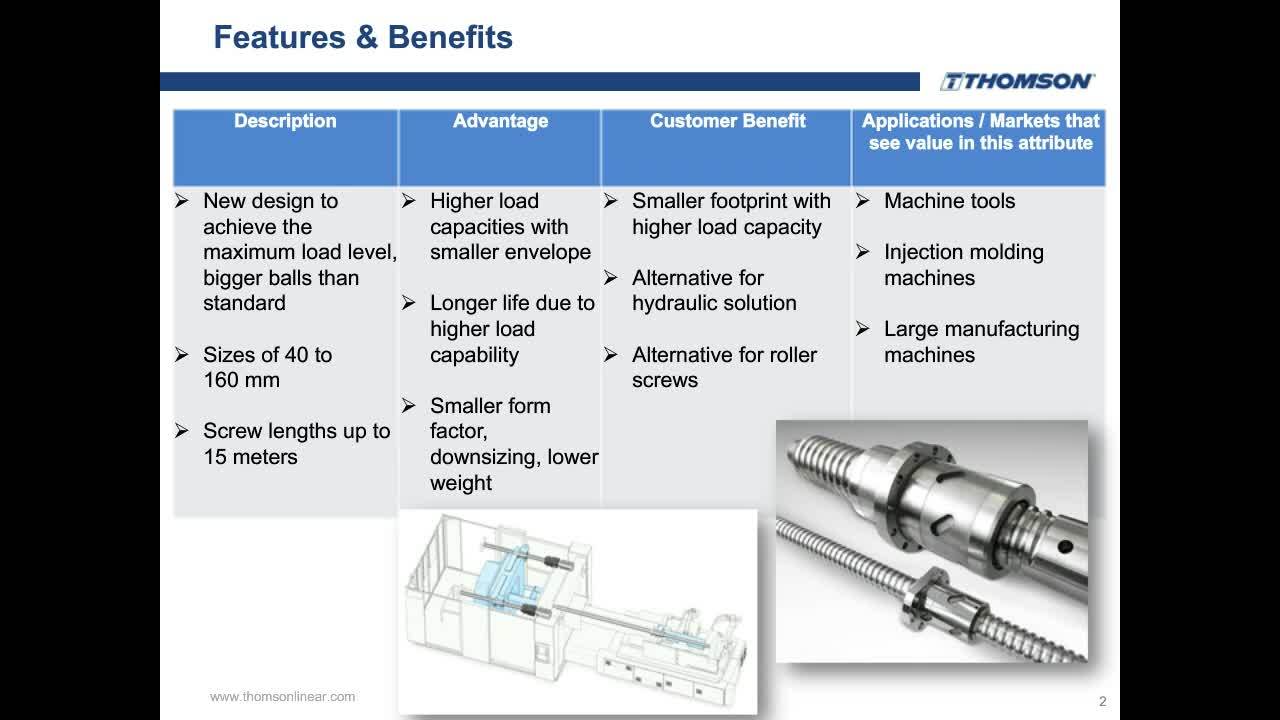
VÍDEO: Dicas de tecnologia: como carregar rolamentos de esfera em uma porca esférica da série métrica
Como recarregar rolamentos de esferas em uma porca esférica. As porcas esféricas métricas costumam ser porcas esféricas de retorno de botão. Mas essa técnica também pode ser usada em porcas esféricas de retorno de tubo.
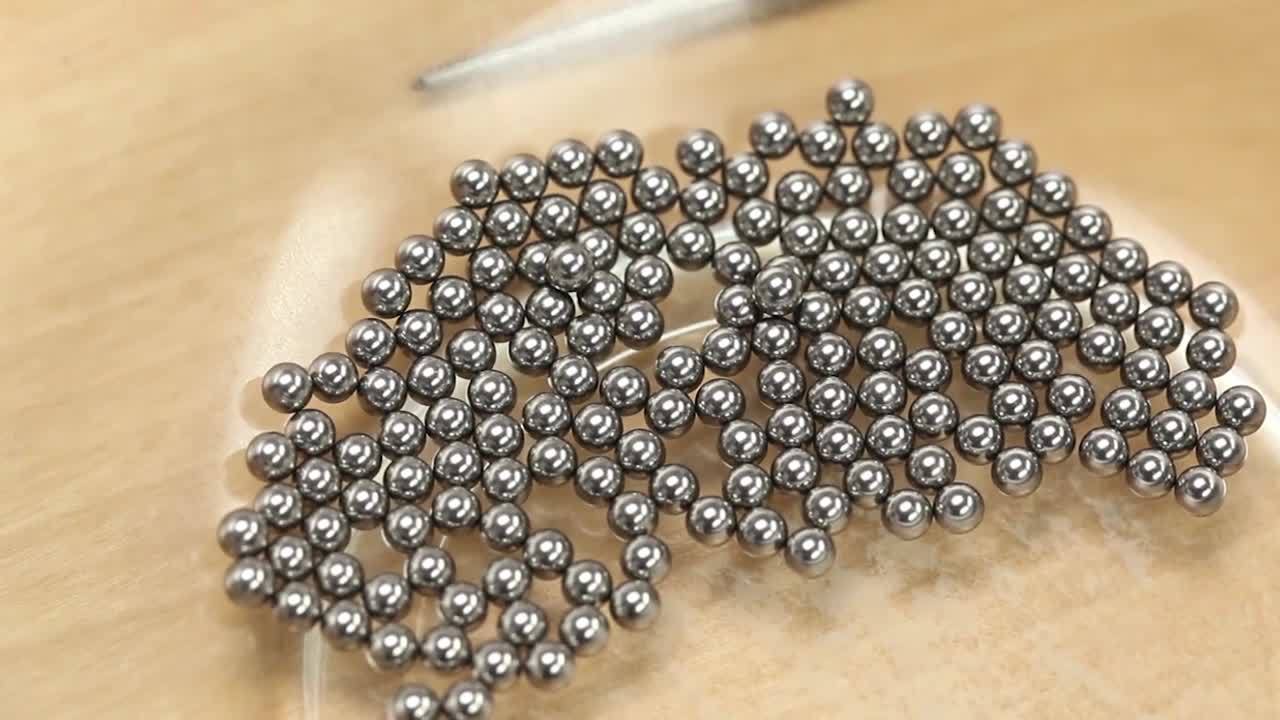
VÍDEO: Considerações e cálculos para escolher o parafuso de esfera certa para a sua aplicação
De todas as milhares de escolhas possíveis, como você poderia avaliar e selecionar o parafuso de esfera ideal para a sua aplicação de movimento linear?
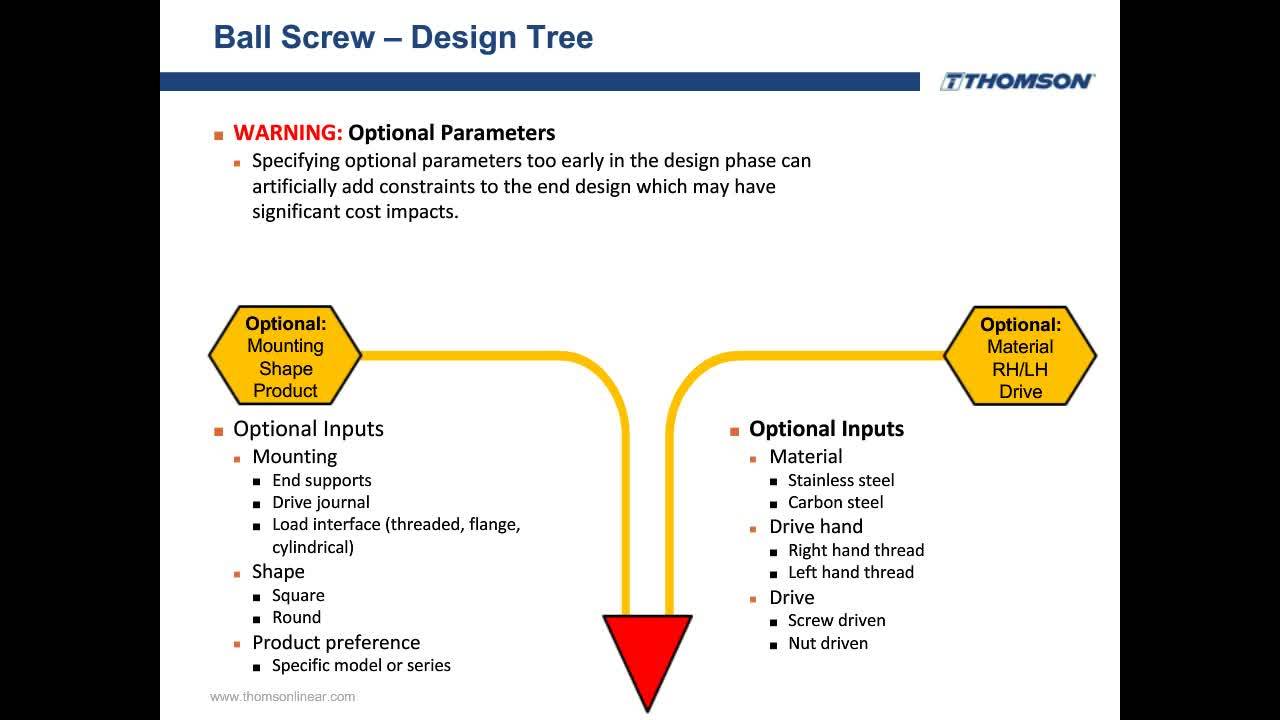
VÍDEO: Dicas de tecnologia: como transferir uma porca esférica para um parafuso de esfera
Como instalar uma porca esférica em um parafuso com um mandril.
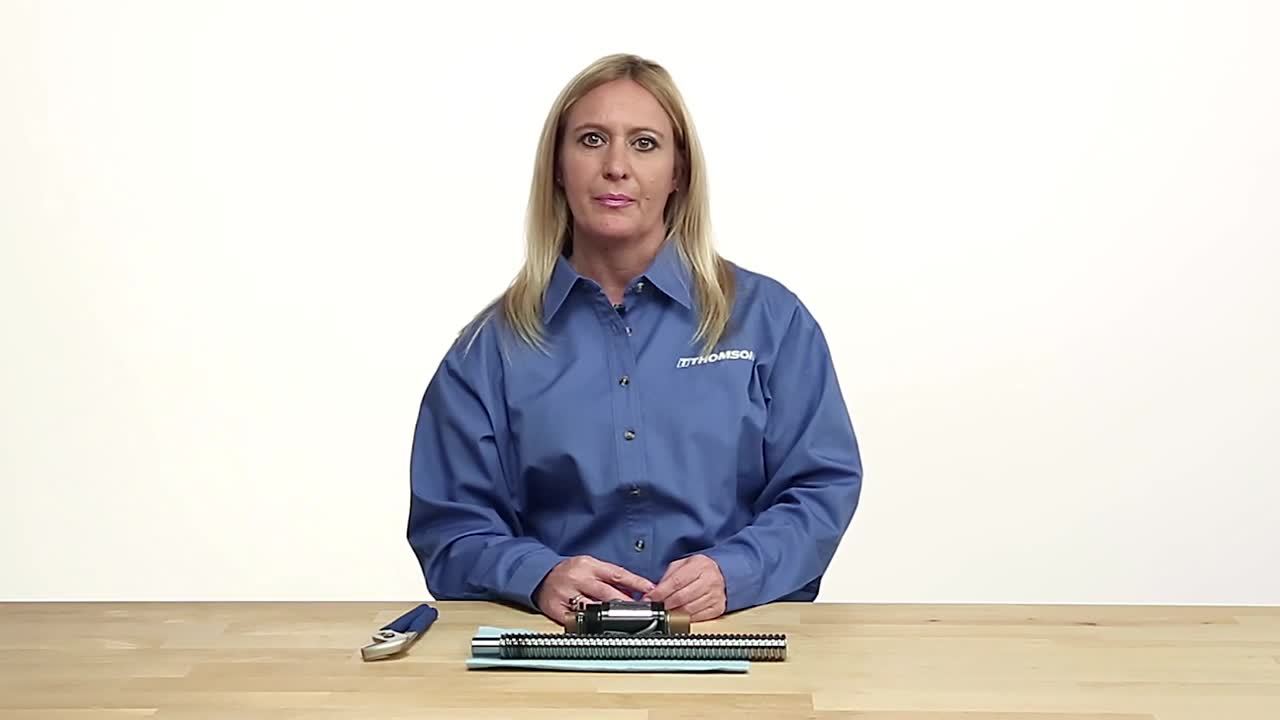
Artigos técnicos
-
Porcas esféricas métricas vs. em polegadas: você está fazendo as perguntas certas?
Como todas as porcas esféricas estão disponíveis tanto nas dimensões em polegadas quanto métricas, às vezes os designers começam o processo de especificação selecionando uma família de produto com base na unidade de medida. Essa decisão pode excluir prematuramente o produto ideal para a aplicação e levar a perdas significativas em termos de tempo, trabalho e custos. Este artigo explica como as perguntas sobre dimensionamento e seleção centradas no desempenho – em vez de nomes de produtos – podem levar a designs de movimento linear mais eficientes.
Saiba mais -
Parafusos de esfera de alta carga – a solução de controle de movimento com uma maior densidade de carga
Parafusos de rolo foram promovidos como a única tecnologia a ser escolhida para lidar com grandes cargas e com limitações de tamanho. Mas, na verdade, avanços na tecnologia de parafuso de esfera agora permitem a capacidade de suportar também as aplicações de alta carga. Isso é importante porque um parafuso de esfera de alta carga costuma custar menos do que a metade de um parafuso de rolo com pontos de desempenho equivalentes.
Saiba mais -
Ball Screws – An Answer to Safe and Efficient Motion for Cobots
Usados em aplicações de produção em larga escala envolvendo operações de elevação, mas que ainda necessitam de um toque humano, os robôs colaboradores (cobots) estão ganhando popularidade. Um francês criador de cobots desenvolveu uma solução que usa parafusos de esfera e atuadores de cabo em vez de engrenagens, criando uma nova referência de eficiência e segurança de cobots.
Saiba mais
Folhetos
Catálogos
Manuais
Technical Articles
| Thomson High-Load Ball Scews Provide Maximum Load Capacity and Longer Life in a Compact Envelope | 2019-02-04 |
Certifications
| CONJUNTOS DE PARAFUSOS ESFÉRICOS | |||
| Conjuntos de parafusos esféricos – Polegada |  |
— | — |
| Conjuntos de parafusos esféricos – Métricos (América do Norte) |  |
— | — |
| Conjuntos de parafusos esféricos – Métricos (Europa) |  |
— | — |
| PORCAS ESFÉRICAS | |||
| Porcas esféricas flangeadas – Polegada |  |
— | — |
| Porcas esféricas flangeadas – Métricas |  |
— | — |
| Porcas esféricas roscadas – Polegada |  |
— | — |
| Porcas esféricas roscadas – Métricas |  |
— | — |
| Porcas esféricas cilíndricas – Métricas |  |
— | — |
| SUPORTES NA EXTREMIDADE | |||
| Suportes na extremidade de parafusos esféricos – Polegada |  |
— | — |
| Suportes na extremidade de parafusos esféricos – Métricos |  |
— | — |
| PARAFUSOS | |||
| Parafusos esféricos laminados Precision – Polegada |  |
— | — |
| Parafusos esféricos laminados Precision – Métricos |  |
— | — |
| ACESSÓRIOS | |||
| Flanges de parafuso esférico |  |
— | — |
| Limpadores de parafuso esférico |  |
— | — |
To provide better service to you on our websites, we and our service providers use cookies to collect your personal data when you browse. For information about our use of cookies and how to decline them or turn them off please read our cookie policy [available here].

